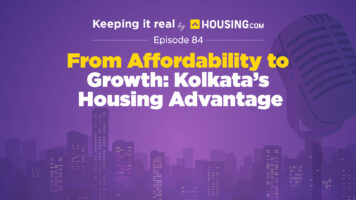In India, homeownership has always been more than a necessity. It has been aspirational, especially since it often dictates personal security. Yet, in recent years, it has become increasingly difficult to attain the dream.
Traditional homeownership has become difficult due to rising property costs, high interest rates, and restricted financing availability, especially for first-time purchasers. Many are forced to reconsider their housing options as a result of the process being further complicated by bureaucratic delays and cultural expectations. People’s lifestyles have changed as a result of urbanization, with cohabitation and renting becoming increasingly popular choices. The real estate industry has, therefore, had to change, moving toward affordability while continuing to serve the luxury market.
Urbanization, rising incomes, and government programs to provide accessibility are driving the Indian real estate market’s continued rise. The industry continues to be a key force behind national development as the economy expands and more people move to urban areas. Several initiatives are included in the Union Budget 2025–2026, which further shape this landscape.
Impact of the Budget on real estate
On 1 February, Finance Minister Nirmala Sitharaman presented the Union Budget 2025-26, placing emphasis on economic growth, infrastructure expansion, and tax reforms. While there were no direct revisions to property taxes or home loan benefits, several measures were introduced to promote housing development and urban investment. For middle-income homebuyers, tax deductions and allowances offer some relief, particularly for those earning below ₹12 lakh annually. These provisions reduce the financial burden of homeownership, but their long-term impact remains uncertain.
Affordable housing sees stronger support
A key highlight of the budget is the continuation of the Special Window for Affordable and Mid-Income Housing (SWAMIH) Fund, which has already delivered 50,000 homes by reviving stalled housing projects. An additional 40,000 units are expected to be completed in 2025, providing much-needed stability for families managing both home loan EMIs and rental expenses.
Building on this, the government has introduced SWAMIH Fund 2, a ₹15,000 crore blended finance facility backed by public and private investments. This initiative is expected to accelerate the completion of 1 lakh additional housing units, strengthening the affordable housing segment and contributing to the overall growth of the real estate sector.
Easing the financial burden on homeowners and landlords
Tax regulations on self-occupied properties have been revised to provide relief to homeowners. Previously, taxpayers could claim the annual value as nil only under certain conditions, but the new provisions allow this benefit for two self-occupied properties without restrictions. This change reduces tax liability and encourages investment in multiple properties.
For landlords, the annual limit for Tax Deducted at Source (TDS) on rent has been increased from ₹2.40 lakh to ₹6 lakh. This adjustment reduces the number of transactions subject to TDS, simplifying compliance for smaller property owners and easing the financial strain on those relying on rental income.
Urban expansion and infrastructure investment
To further support urban development, a ₹1 lakh crore Urban Challenge Fund has been announced. The fund will finance key proposals outlined in the previous budget, such as Cities as Growth Hubs, Creative Redevelopment of Cities, and Water and Sanitation Projects. Up to 25% of project costs will be covered, with the remaining funds sourced from bonds, bank loans, and private partnerships. A ₹10,000 crore allocation has been earmarked for 2025-26, reinforcing the government’s focus on urban sustainability and infrastructure expansion.
Investment and the luxury market
While the budget heavily supports affordable housing, luxury real estate benefits indirectly through investment incentives and financial stability measures. The government has proposed tax certainty for Alternate Investment Funds (AIFs), particularly those investing in infrastructure and high-growth sectors. By providing clarity on taxation, the initiative encourages private investment, which could drive demand for premium properties in expanding urban centres.
A National Framework for Global Capability Centres (GCCs) will also be developed to promote business expansion in tier-2 cities. This initiative includes recommendations for improving infrastructure, easing regulatory requirements, and fostering industry collaboration, all of which could stimulate real estate demand beyond metropolitan hubs.
Clear shift towards affordability
The Union Budget 2025-26 reinforces the government’s commitment to affordable housing and infrastructure expansion. The introduction of SWAMIH Fund 2, tax relaxations for homeowners, and increased support for urban redevelopment create a strong foundation for middle-income buyers and real estate investors in emerging markets.
Luxury real estate remains stable, benefitting from indirect investment incentives and long-term infrastructure growth. While no direct measures were introduced for high-value properties, the focus on improving urban connectivity and expanding business hubs provides opportunities for premium developments in the future.
By prioritizing affordability and infrastructure, the budget sets the stage for a more inclusive real estate sector. Whether these measures translate into tangible benefits for buyers and investors will depend on execution, economic conditions, and market dynamics in the coming months.
(This article has been authored by Amrita Gupta, director, Manglam Group)
| Got any questions or point of view on our article? We would love to hear from you. Write to our Editor-in-Chief Jhumur Ghosh at jhumur.ghosh1@housing.com |







